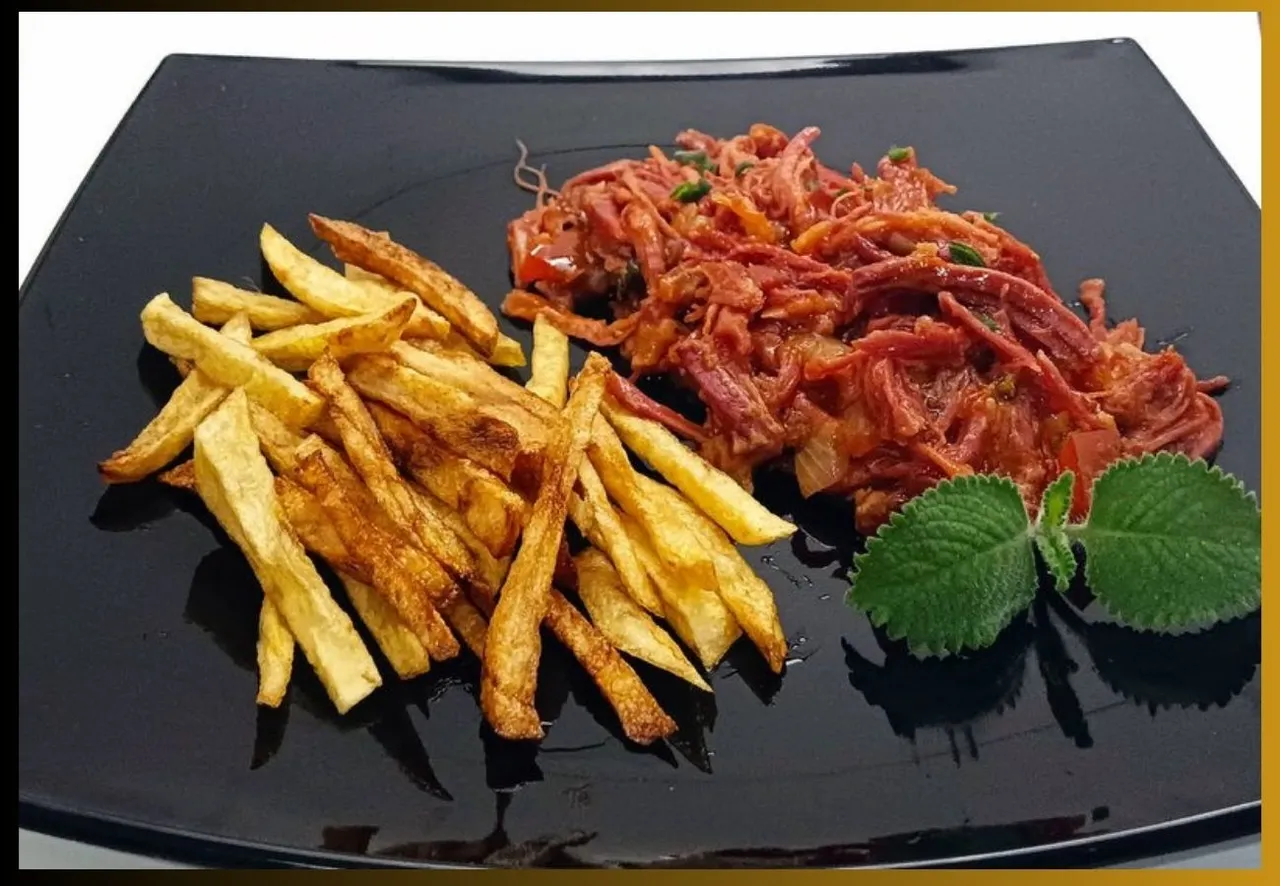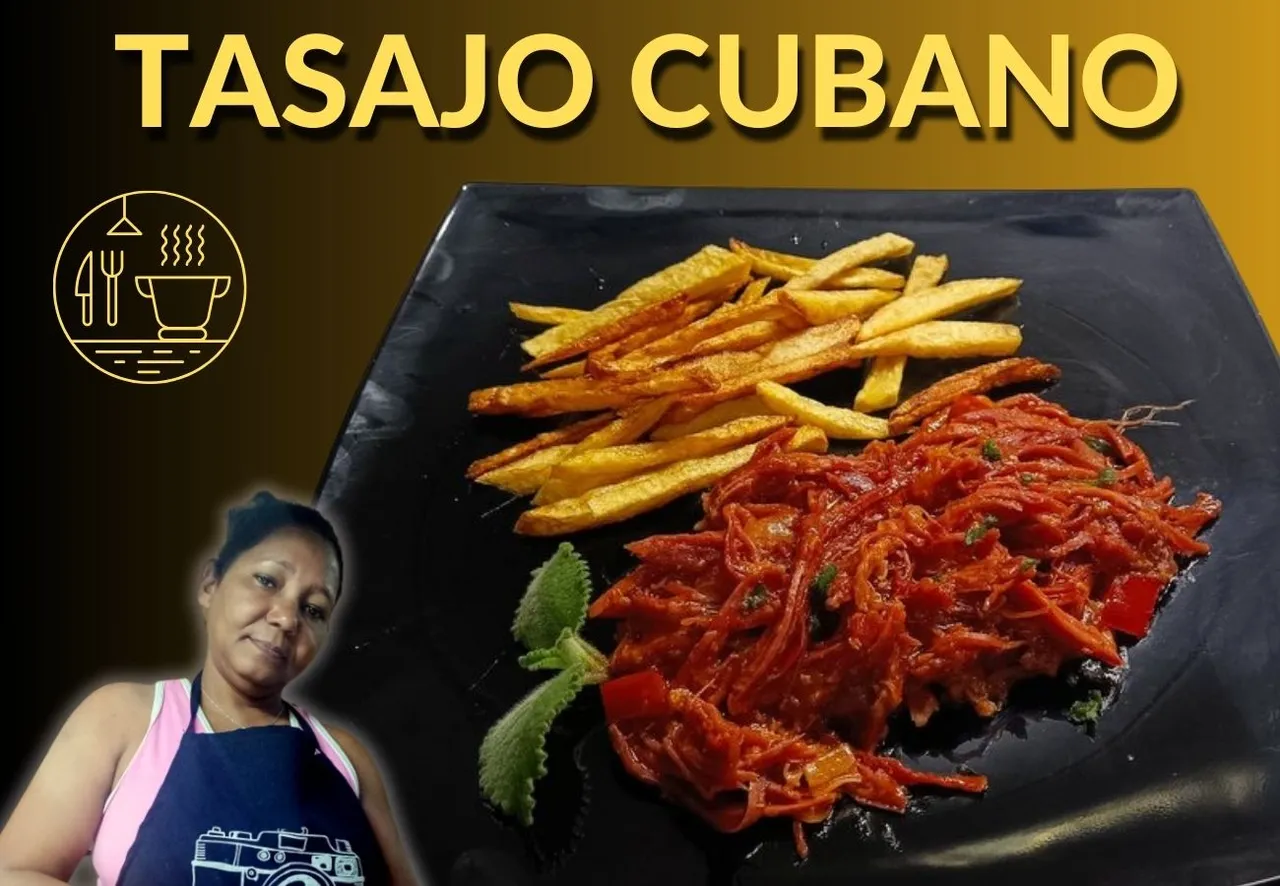
¡Hola, queridos amigos de Foodie Bee Hive!
Desde que era niña, no había probado el tasajo y no sabía qué hacer con el kilogramo que mi esposo me compró. Le pregunté a mi mamá y me explicó que la única diferencia con la carne normal era hervirlo para eliminar un poco de sal. Después de desalarlo, se puede preparar al gusto. En este post, les mostraré el resultado. Ya ni recordaba el sabor distintivo del tasajo, ¡es realmente delicioso!
El tasajo es una de las recetas más antiguas de la comida cubana y solía prepararse en cualquier casa, especialmente en los campos donde no se contaba con las condiciones adecuadas para conservar el producto. Se cortaba en finas tiras (de ahí su nombre, "tasajo"), se salaba y se maceraba para lograr su conservación durante largos periodos. En la actualidad, es poco conocido por las nuevas generaciones.
Hello, dear friends of Foodie Bee Hive!
Since I was a little girl, I hadn't tasted tasajo and I didn't know what to do with the kilogram my husband bought me. I asked my mom and she explained that the only difference with regular meat was to boil it to remove some salt. After desalting it, you can prepare it to taste. In this post, I will show you the result. I didn't even remember the distinctive taste of tasajo anymore, it is really delicious!
Tasajo is one of the oldest recipes of Cuban food and used to be prepared in any house, especially in the fields where there were no adequate conditions to preserve the product. It was cut into thin strips (hence its name, "tasajo"), salted and macerated to preserve it for long periods of time. Nowadays, it is little known by the new generations.

Para la preparación, utilicé los siguientes ingredientes.
- 1 kg de tasajo de res
- 1 cebolla blanca
- 1 ají pimiento
- 2 cucharadas grandes de tomate
- Ajo triturado
- 1 cucharada de vino seco
- Comino
- Pimienta
- Aceite
- Sal
For the preparation, I used the following ingredients.
- 1 kg of beef tasajo
- 1 white onion
- 1 chili bell pepper
- 2 large spoonfuls of tomato
- Crushed garlic
- 1 tablespoon of dry wine
- Cumin
- Pepper
- Oil
- Salt

Después de hervirlo y desechar el agua, le agregué nuevamente agua y lo dejé durante media hora para ablandar la carne.
After boiling it and discarding the water, I added water again and left it for half an hour to tenderize the meat.

Una vez que estuvo blanda la carne, esperé a que se enfriara y la deshilaché.
Once the meat was tender, I waited for it to cool and shredded it.

Corté el ají pimiento y la cebolla en cuadritos.
I cut the bell bell pepper and onion into small squares.
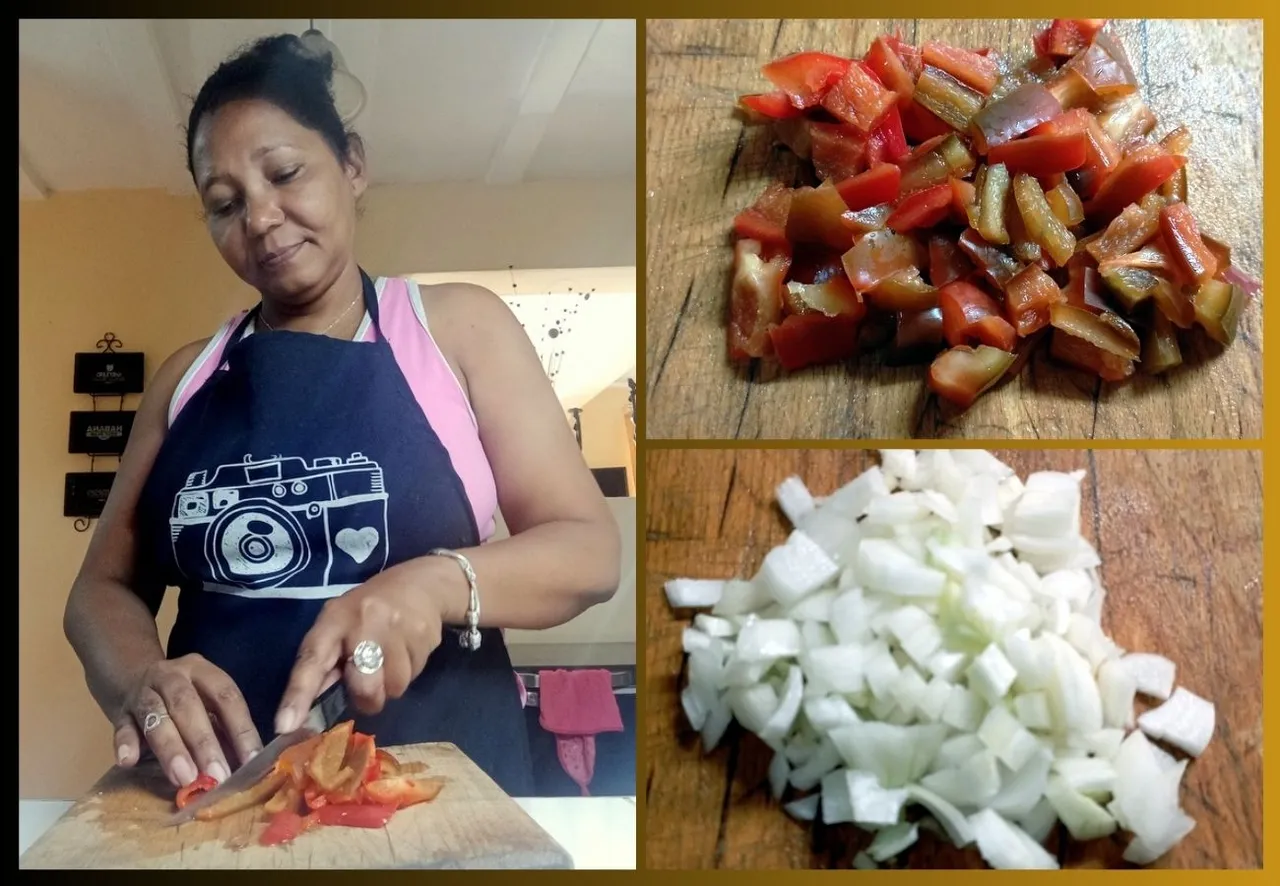
En una cazuela verti un poco de aceite , lo calenté y sofreí la cebolla y el ají pimiento.
In a casserole I poured some oil, heated it and fried the onion and the chili bell pepper.
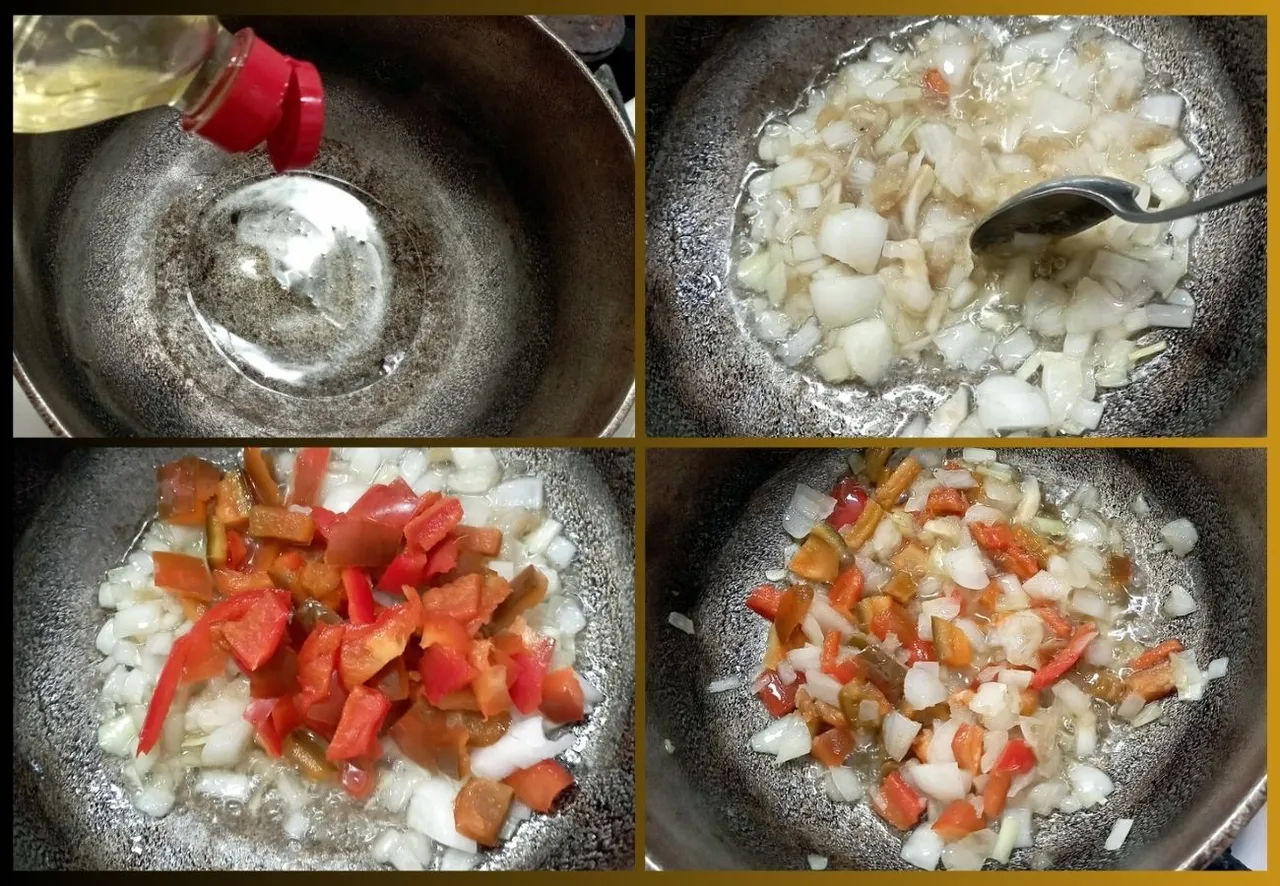
Luego agregué el tasajo y lo dejé dorar junto con las verduras.
Then I added the tasajo and let it brown together with the vegetables.

Incorporé las dos cucharadas de puré de tomate, la cucharada de vino seco, el comino y la pimienta.
I added the two spoonfuls of tomato puree, the spoonful of dry wine, the cumin and the pepper.
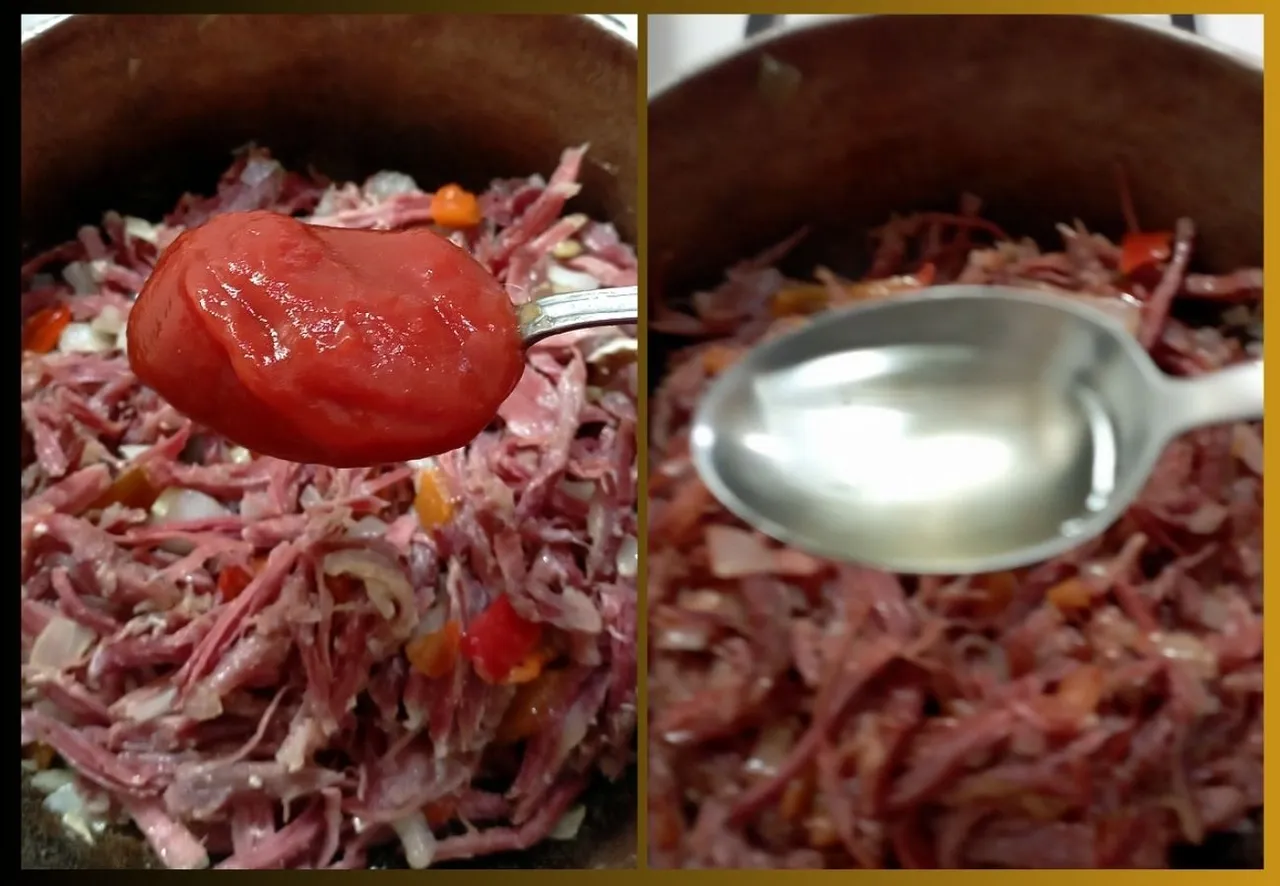

Cociné a fuego medio hasta que la salsa se espesó un poco y ¡listo! . Servi con papas fritas esta delicia para el paladar.
I cooked over medium heat until the sauce thickened a little and that's it! Serve with french fries this delight for the palate.
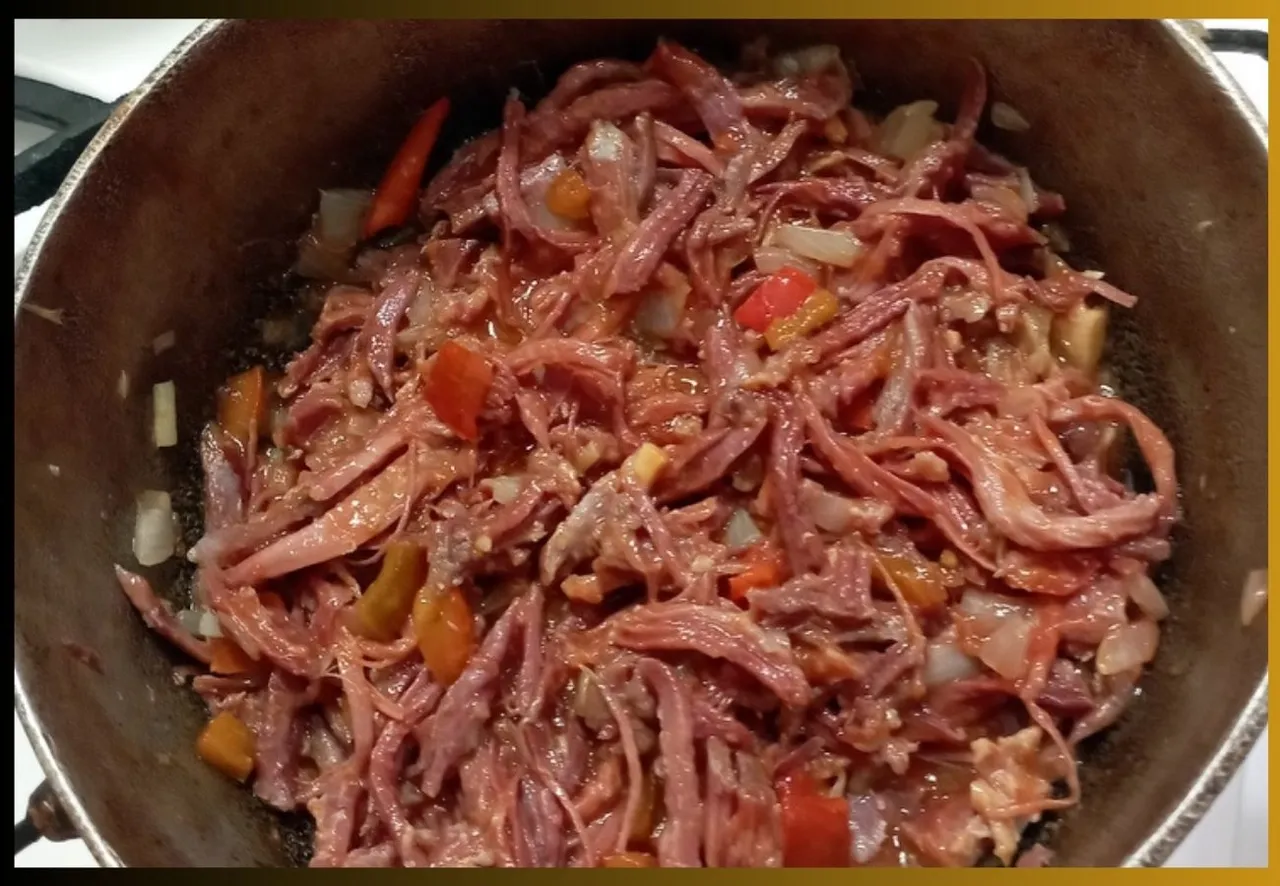

Un saludo a todos, amigos. Espero que disfruten de esta reliquia de nuestra cocina. Que tengan un hermoso día. ¡Nos vemos!
Greetings to all, friends. I hope you enjoy this heirloom of our cuisine. Have a nice day, see you!
